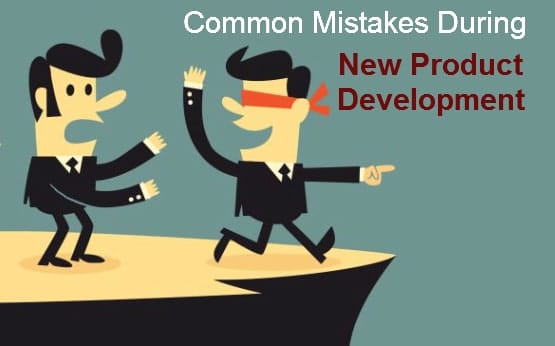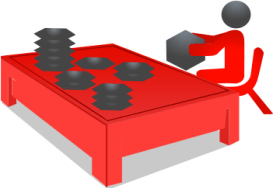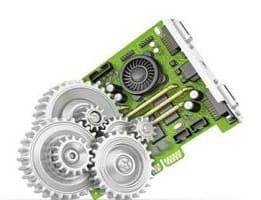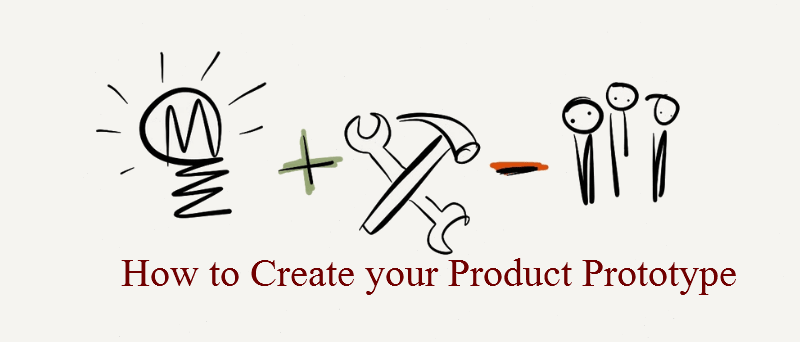The success of a business enterprise entirely depends upon its products and innovations. Good products and innovations arise from efficient product development strategies. Numerous new products hit the market every week, but not many actually yield the kind of return that the enterprises had expected. So what seems to be the problem?
Most businesses often miss out on several important aspects of the product development process, which ultimately factors to the failure of the entire project. Consequently, they end up overspending and missing the predetermined launch date only to introduce a new product that isn’t precisely the best. In order to avoid this pitfall, what can businesses do? Well, they should avoid the following common mistakes:
Not Performing the Market Research
Prior to the new product development, failing to carry out thorough market analysis and research is one of the biggest mistakes that businesses make.
Not performing the research leads to the failure of the entire project, as businesses have no vital information about what the consumers actually want, how they can meet their demands, and how they can address the prevailing problems.
While every business has deadlines to meet, it is essential to make a habit of performing extensive market research before moving on with the new product development process. This way, businesses can escape any likely mistakes and create a decisive plan that will lead the way for better future product developments.
Not Planning for the Future
A new product development is all about bringing new innovations for the future. Product designers and product developers spend a considerable amount of time in creating solutions that will not only give a respectable return in the present, but also in the future. Not planning for the future factors directly toward bad product development. It will also affect future product development endeavors.
In order to avoid this, ensure to design your new product for the present as well as for the future. This way, you will be able to devise simple, yet useful products with superior features that can also address the future needs. Therefore, when you have a solid idea, ensure to analyze and visualize how it will function and perform in the future with the advent of new technological advancements.
Not Focusing on Product, But on its Benefits
Most businesses believe that a successful new product should offer a number of benefits to its potential consumers. While it is an excellent approach to product development, it may raise several issues and problems in situations where the new product actually cannot provide what was suggested or quoted. Remember, the focus of the product development team has to be on the development of the product itself instead of the benefits offered. Eventually, the consumers will purchase the product for its benefits, but if you do not focus on the limitations of the product, the final result would be an exceptional new product that maybe no one would want to buy.
Pricing it Too Low or High
One of the main objectives of every business is to gain maximum return on the new product they bring in the market. Nevertheless, if the price of the new product is too high, the consumers will not buy it and if the price is too low, the business will fail to make the profit. Therefore, the price of the new product has to be on par with the advantages or benefits it offers. The business also needs to consider the purchasing power of the target market while setting the price for its new product.
Remember, if the price is high, the consumers will probably ignore the new product, and the product will remain on the shelves, leading to a big loss. Therefore, a business needs to ensure to price its new product based on the price its competitors charge.
If you want to learn more about new product development or if you want to create a successful new product, GID Company can help. GID Company, a new product design and product development company in California, USA, has vast experience in designing and developing successful new products for its clients. Utilizing the latest technologies, like Dassault Systèmes’ 3DEXPERIENCE platform, the professionals at GID Company even help develop new product prototypes at reduced costs. Aside from new product design, product development, and product prototype development, GID Company also helps with product branding, product packaging, manufacturing, inventory management, and more. To learn more about GID Company, just visit https://www.gidcompany.com/.
Currently, the new product development expert in the US, GID Company is also offering a free 15-minute telephonic consultation with one of the veterans, Jim Grimes. You can call Jim at 714-323-1052 between 8:00 AM to 5:00 PM PST.








